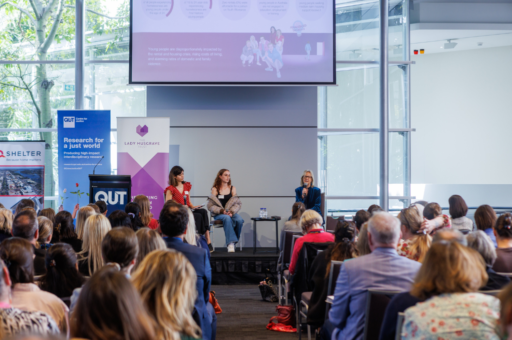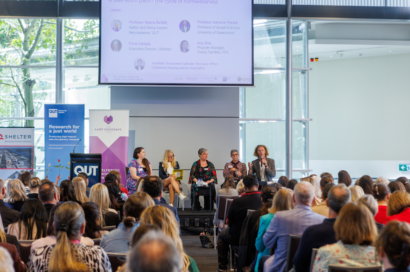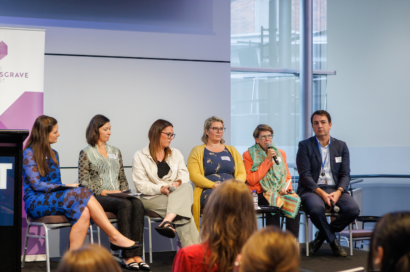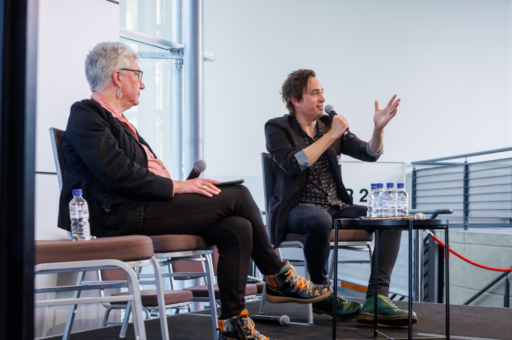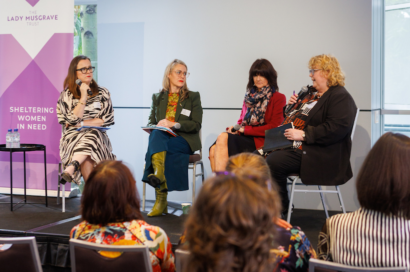
What we can learn from the frontlines of Queensland’s housing crisis
Sep 17, 2024
Queensland is in the grip of a housing crisis, with the rate of homelessness in our state soaring to nearly three times the national average. Here’s what we can learn from those working on the frontlines of this emergency.
At The Lady Musgrave Trust’s Annual Forum on Women and Homelessness for 2024, three key voices took centre stage during the first panel of the day, which focused on ‘The changing face and growing body of homelessness’. Experts from the frontlines came together to share their unique perspectives and lived experiences on the complexities of homelessness in Queensland.
Here’s what we learned from those directly confronting the crisis every day.
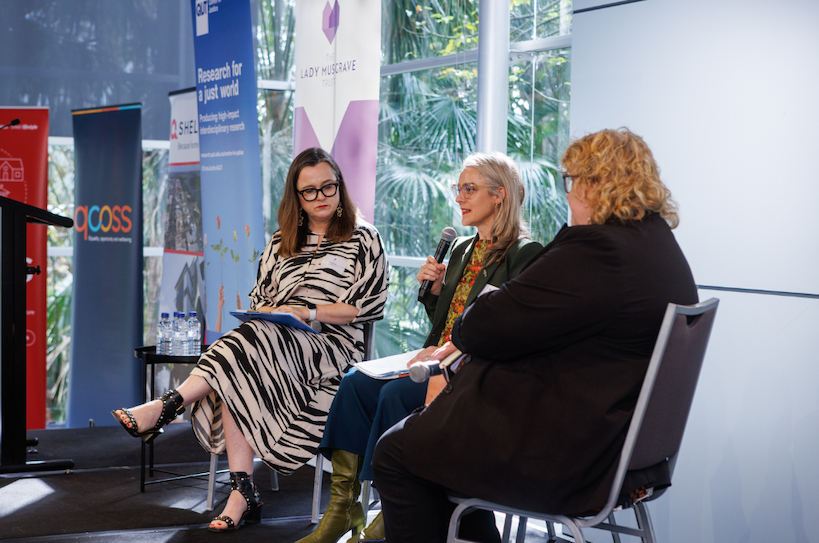
A crisis twice the size of Cairns
Aimee McVeigh is the CEO of QCOSS, Queensland’s peak body for the social service sector. She painted a grim picture of the current situation, citing recent reports prepared by her organisation. “We have a population about twice the size of Cairns currently with unmet housing needs,” she said.
Back in 2020, QCOSS launched ‘The Town of Nowhere’, a campaign aimed at ending Queensland’s housing crisis. “The concept was that if everyone on the social housing register came together to form a town, it would be Queensland’s fifth largest, about the size of Gympie,” Aimee said.
However, QCOSS’ latest research with the University of New South Wales and leading housing policy expert, HAl Paulson, revealed an even more dire situation. “It turns out we’re looking at a population that’s about twice the size of Cairns,” Aimee shared.
It’s an alarming figure that is putting immense pressure on support services across the state. “We’re seeing more and more people reach out to all kinds of services,” Aimee explained. “Not just specialist homeless or housing services, but across the board. But it doesn’t matter what kind of community organisation people are approaching – housing really is the big issue.”
While the scale of the crisis is staggering, Aimee pointed out that it's not confined to specific areas.
"Once upon a time, not that long ago – five years ago or so – you could still move out to regional Queensland and find an affordable rental, depending on other aspects of your life," she said. "That's really not the case anymore."
In Brisbane, rents have increased by about 50 per cent over the past five years, but the situation is even more dire in some regional areas.
"If you go to somewhere like Gladstone, rents have increased by 110 per cent in just five years," Aimee noted. This "race to the bottom" has made regional housing an increasingly unattainable option for many Queenslanders.
A crisis impacting us all
Karyn Walsh is the CEO of Micah Projects, a not-for-profit organisation committed to providing services and opportunities for the community. She pointed out that while homelessness has consistently affected the most marginalised groups – including First Nations people, young people and women – the crisis has now broadened to include a wider range of individuals and families, including those who are fully employed.
“In the last 10 years, the number of women and children sleeping rough or in a car has more than doubled, and the number of those couch-surfing has increased by 79 per cent,” she said.
“It’s not just the most vulnerable anymore. People who were once able to find a place to live are now struggling to secure housing. The issue isn’t just about income; it’s about the lack of affordable housing options and a system that fails to meet the needs of a growing population.”
QCOSS have observed similar trends, revealing that homelessness now affects not just the traditionally vulnerable, but also those with stable employment, as rising rents and dwindling housing options take their toll.
"We’ve gathered stories from across the state that highlight the severity of this issue,” she continued. “Professional women with full-time jobs, even those with degrees, are living out of their cars with children.”
Karyn spoke about the need for a shift in thinking away from silos, and to consider the population as a whole.
“It’s about seeing all women as individuals with rights to income, housing and safety,” she said.
The hidden trauma of homelessness: Tracey’s story
Tracey Tewksbury, a volunteer who works with people living in tents in West End and other areas of Brisbane, says she has seen the scale of the crisis grow firsthand.
“Young mums with children are moving into Musgrave Park and living in tents, and it’s a constant stream,” she shared. “Even if they get housing and move out, there are always more people coming in to replace them.”
Tracey has her own lived experience of homelessness, and the deep and often hidden trauma that accompanies it. Despite her best efforts to keep her family together and stay in their rental home, her plan fell apart when her partner assaulted her daughter. Forced to flee, Tracey and her daughter became homeless, sleeping rough in a machinery shed for 11 months.
Though she continued working, it wasn’t enough to secure a rental. Her daughter’s distress grew, with frequent disappearances that left Tracey frantic.
While living on a friend’s property, Tracey and her daughter used a garden hose to wash, illustrating the gap between well-meaning help and the reality of homelessness. "[My friend] wanted to help but had no idea what it meant, even though she was looking at me every day, falling to pieces," she recalled.
Even after securing a place to live, the challenges persisted. Tracey described the psychological impact of homelessness, the strain on her relationship with her daughter, and the difficulty in accessing support services.
"Once you get a house, it's not better,” she said, emphasising the need for ongoing emotional and psychological care. “That's where you need the support to come in and wrap around you.”
Tracey’s experience is a powerful case for the need for a holistic approach to addressing homelessness – one that includes mental health services, trauma-informed care, and family support.
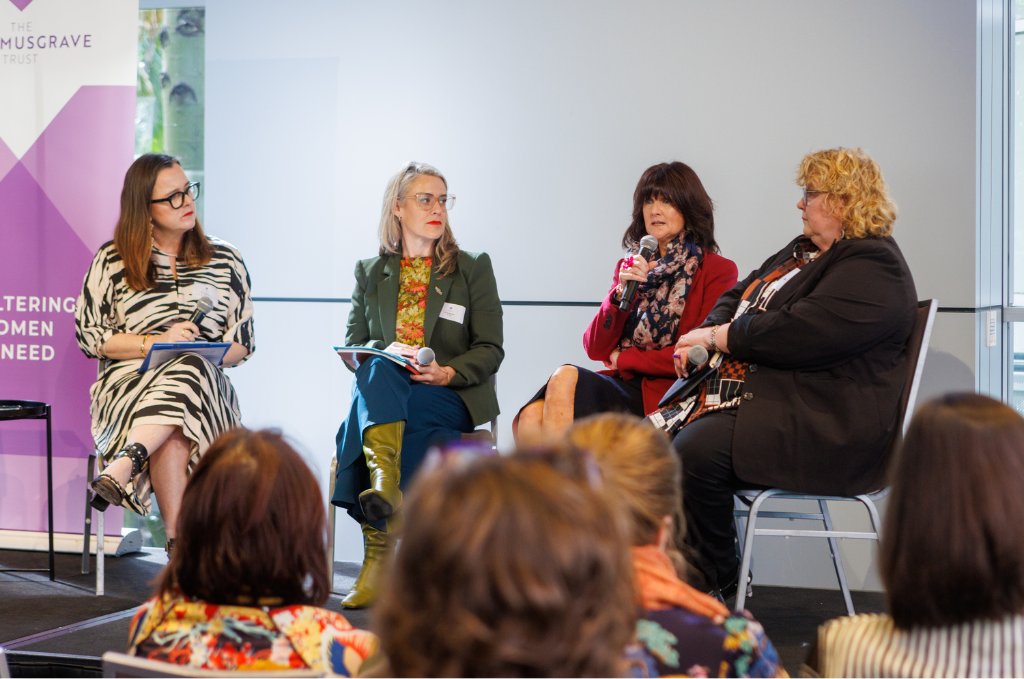
Frontline workers under pressure
The impact of this crisis is not just felt by those experiencing homelessness; it also weighs heavily on frontline workers.
“We’re tired, I think,” admitted Karyn. “We have more unmet needs and unanswered phone calls than we've ever had."
Frontline workers face the emotional toll of assisting those in dire need while also grappling with their own challenges. Aimee pointed out how the crisis is affecting the very people trying to combat it, with "many of our own workers now experiencing homelessness."
She explained that the social services workforce, which is predominantly female, often deals with poor employment conditions, low pay and insecure work. She said one of the key challenges faced by homeless services is systematic frustration, as despite their best efforts, frontline workers often struggle to meet the overwhelming demand.
“We might not always get it right, and we might not always have the right response,” she acknowledged. “But staff do hear and are impacted by what they see and listen to. People have been saying this was coming for a long time.”
Karyn emphasised that the root of the crisis lies in the lack of social housing.
“In Brisbane alone, it’s well over 200 families and 100 individuals a night in motels, in crisis accommodation,” she said. “That’s not the answer.”
She stressed the need for a more proactive approach, one that addresses both the crisis and its long-term solutions. “We’re planning on building 2,300 houses a year, but we need a lot more than that. For every crisis bed, we need social housing.”
Housing solutions on the table
For Karyn, simply building more houses isn't the sole solution. She advocated for supportive housing systems that not only provide shelter, but also cater to individuals who lack the skills or ability to maintain a tenancy.
"We need a supportive housing system that combines safety and support for people who cannot maintain a tenancy on their own," she said.
While there is a push to build more homes, the panellists agreed that fair regulation in the private rental market is equally necessary to stem the tide of homelessness.
"A third of our community rents,” Aimee said. “Renting is a viable housing option, and it's going to be the option a lot of people have to choose in the future. However, rising costs have made this option increasingly unaffordable for many.
"If we're going to expect the market to provide for a basic human need, we need to regulate it and make sure renting is affordable."
Aimee reiterated QCOSS’ support for a cap on rental prices to help achieve this. "We don’t advocate for a freeze,” she explained, “but for a cap which would mean landlords can only increase rent once a year."
Karyn also called for a diverse and multi-faceted approach, stressing that a one-size-fits-all solution is insufficient.
"We need both scale and targeted solutions," Karyn added. "We need to map out all needs in parallel to each other, and create pathways that address the diverse issues people face."
Final thoughts: Tracey’s closing reflections
Tracey concluded the discussion by sharing the emotional aftermath of finally securing housing after a long period of homelessness.
"By the time I found a home, my nervous system was shot,” she recounted. “I had a breakdown on the first night."
Without the necessary support systems in place, the trauma of her experiences continued to impact her life and her relationship with her children.
"It's not just about the parents,” she said. “It’s about the kids that learn all this behaviour.”
Tracey’s journey reminds us that securing a roof over someone's head is just the beginning. True recovery from homelessness requires a holistic approach—one that includes not only housing, but also access to mental health services, trauma-informed care, and sustained support for families.
As Queensland grapples with this growing crisis, it's clear that we need more than temporary fixes. We need to address the systemic issues, increase housing supply, and ensure that no one falls through the cracks. The time for meaningful change is now – and solving this crisis will require the collective effort of government, communities, and individuals alike.

